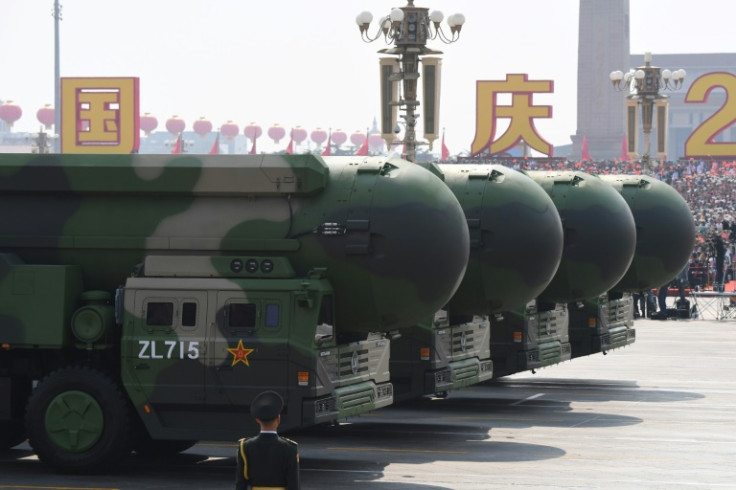China's ICBMs Bring Two-Thirds of Australia Within Strike Range, Rattled Canberra Turns To US
KEY POINTS
- China has widely expanded its ability to perform missions in distant waters away from its shores
- Pentagon says by 2035, China will possess 1,500 nuclear warheads posing the most significant threat to the U.S.
- The U.S. strategy is to distribute its forces across the western Pacific region
Rattled by indications that "two-thirds' of Australia will be within striking range of Chinese long-range nuclear missiles, Washington and Canberra have stepped up their defense cooperation while attempting to rope in other regional allies to join their military operations.
According to local media reports, Australia's Defense Strategic Review, prepared by former defense analysts and the RAND Corporation, contains maps that show how much of the country is within striking range of Chinese missiles.
In an effort to counter China, the United States is expanding its own military footprints in Australia, boosting the rotation of its army and naval presence there. Washington and Canberra are also seeking to integrate Japan into their combined military activities in a bid to have closer multilateral defense cooperation in the Indo-Pacific region.
Media reports based on the submission made to Australia's Defense Strategic Review say that China's military bases on artificial islands in the South China Sea put Australia well within striking distance of Chinese missiles. The report is expected to be made public in March.
Given Beijing's massive missile modernization program, the findings of the report are not surprising. However, it is especially alarming as this is the first time Canberra has publicly admitted the threat to its sovereign territory and military assets.
Particularly concerning are China's Dongfeng series of ballistic missiles, some of which are capable of carrying multiple conventional or nuclear warheads. Washington has also acknowledged that China has deployed its new JL-3 long-range intercontinental ballistic missiles on six PLA Navy's Type 094 (Jin-class) nuclear submarines, allowing it to target the U.S. continent from closer to its own shores.
Given China's aggressive posturing, laying claim over Taiwan and most of the South China Sea region, relations between Washington and Beijing are rife with tensions. In a 2018 report to Congress, the defense department acknowledged that China had a robust Anti-Access/Area Denial military capability across the first island chain.
With growing experience and rapid military modernization involving larger and more advanced platforms, Beijing has widely expanded its ability to perform missions in distant waters away from its shores.
The reports of Australia's threat evaluation come just days after the Pentagon warned about China expanding its nuclear arsenal. According to the Pentagon assessment released on Nov. 29, China's operational nuclear weapon inventory has now crossed 400.
According to the Pentagon, by 2035, China will possess 1,500 nuclear warheads posing the most significant threat to the U.S. Washington, in comparison, has 3,750 active nuclear warheads.
Meanwhile, the U.S. strategy is to distribute its forces across the western Pacific region, aimed at complicating China's missile targeting decision in the event of a conflict. At the same time, the spread of forces outside the "second island chain" will provide Washington and its allies the ability to carry out its own strike missions targeting Chinese military assets.
In line with this objective, while B-2 Spirit stealth bombers have been deployed in Australia for the first time this year, the U.S. has also drawn up a detailed plan to deploy up to six nuclear-capable B-52 bombers to northern Australia.
These developments come amid reports that China may look to pursue a more aggressive posture against Taiwan and across the South China Sea over which Beijing lays claim.
Chinese President Xi Jinping, who recently secured an unprecedented third term in office, has vowed the use of force, if peaceful means didn't work, to bring Taiwan under Beijing's control.

© Copyright IBTimes 2025. All rights reserved.





















